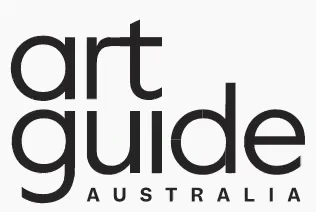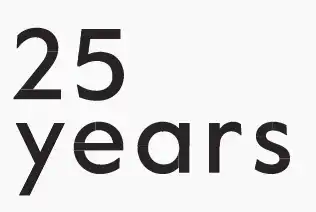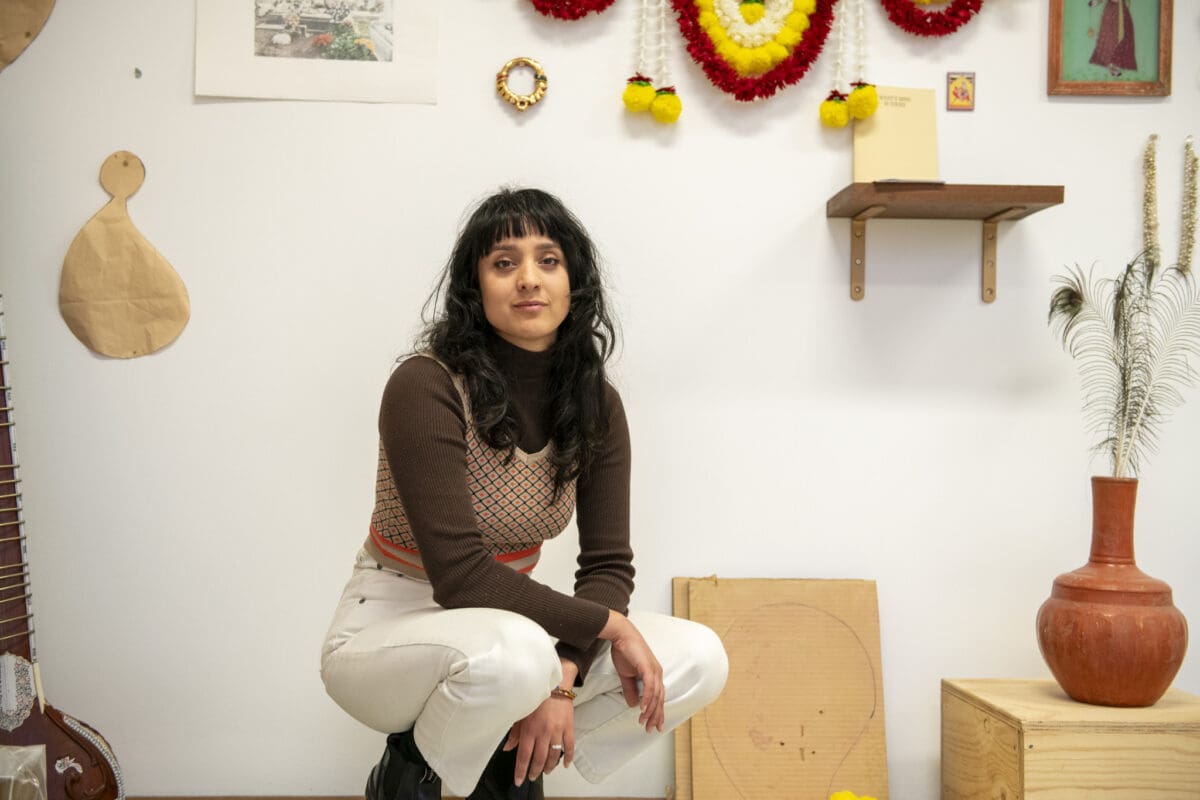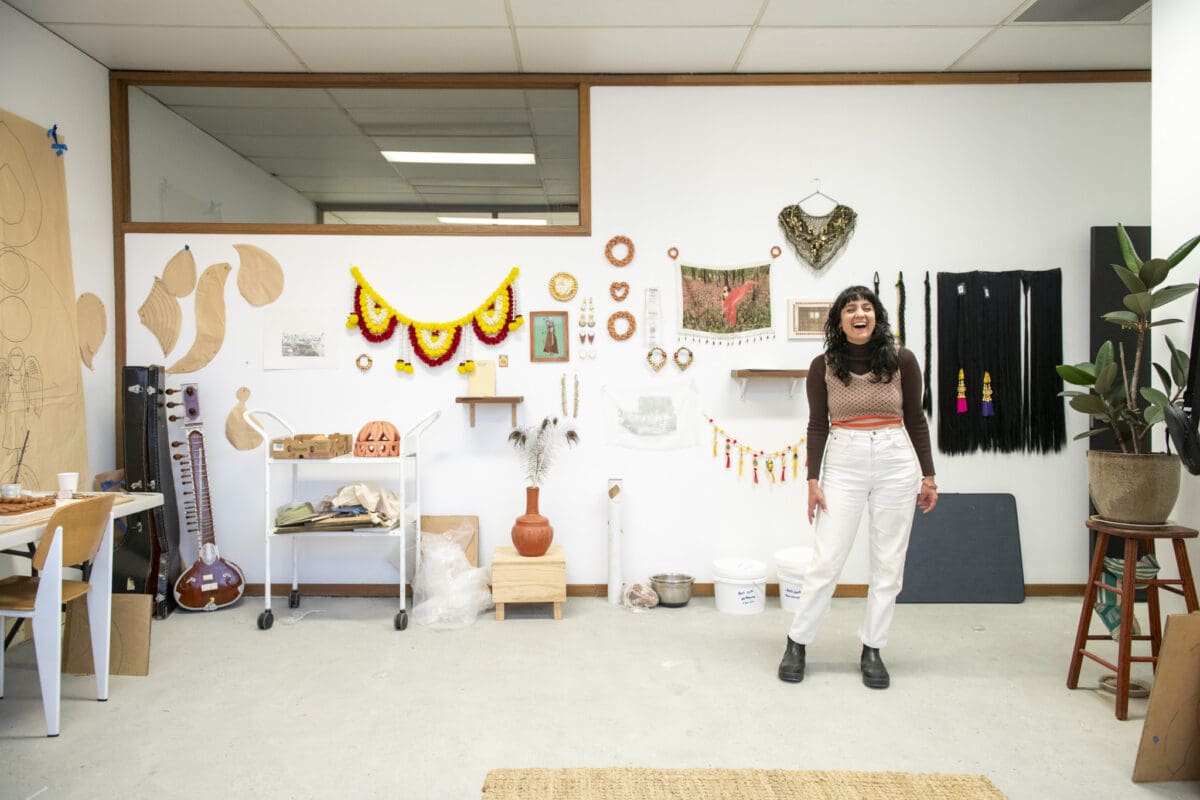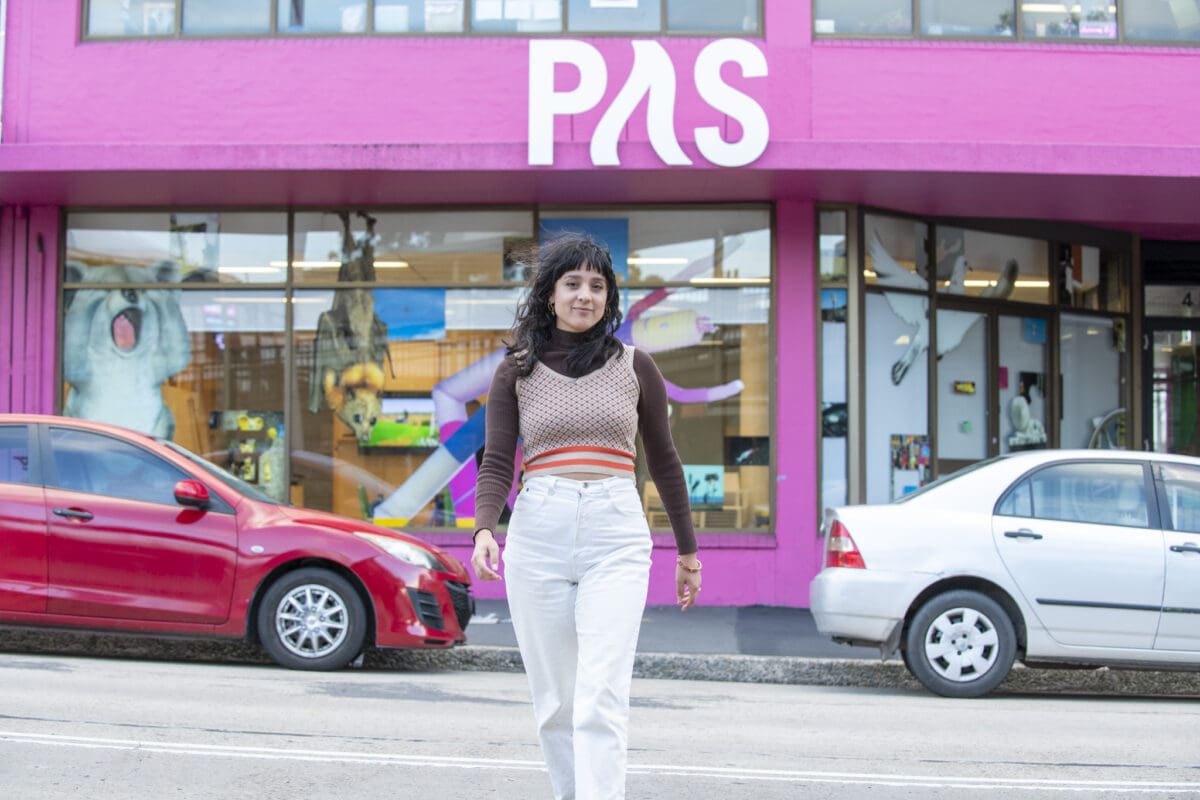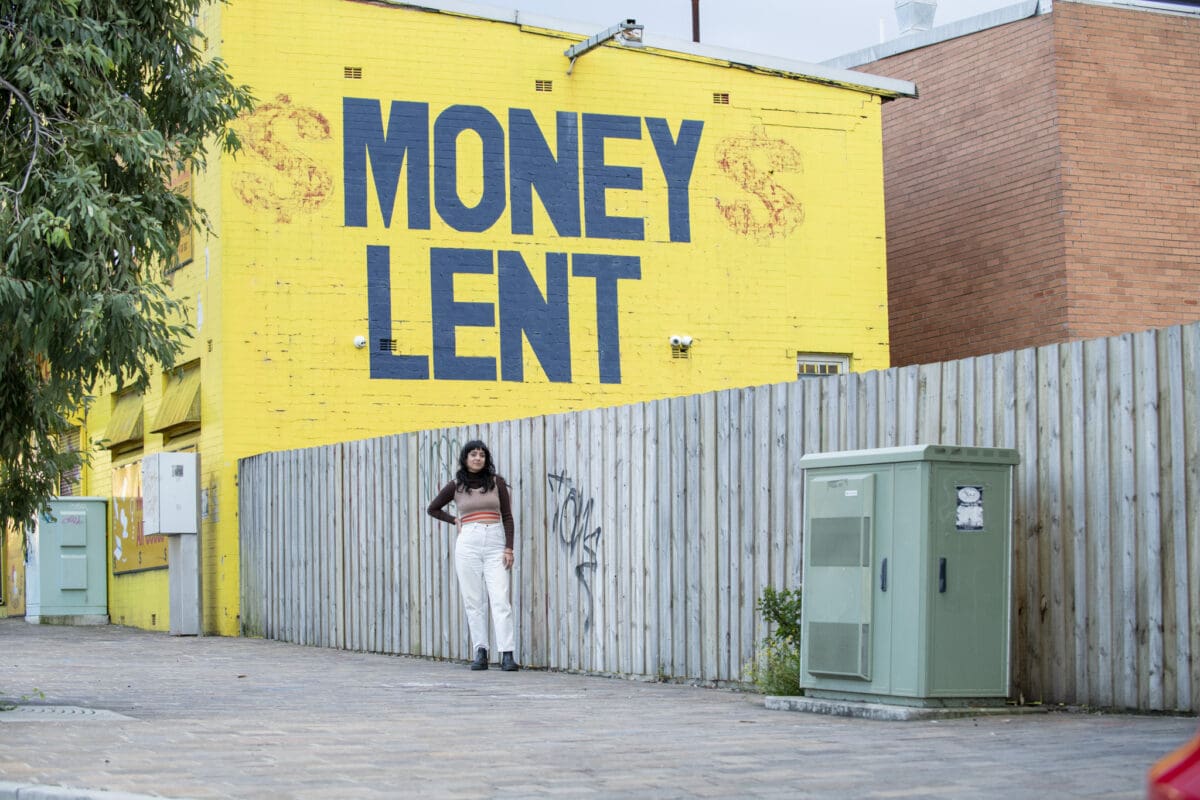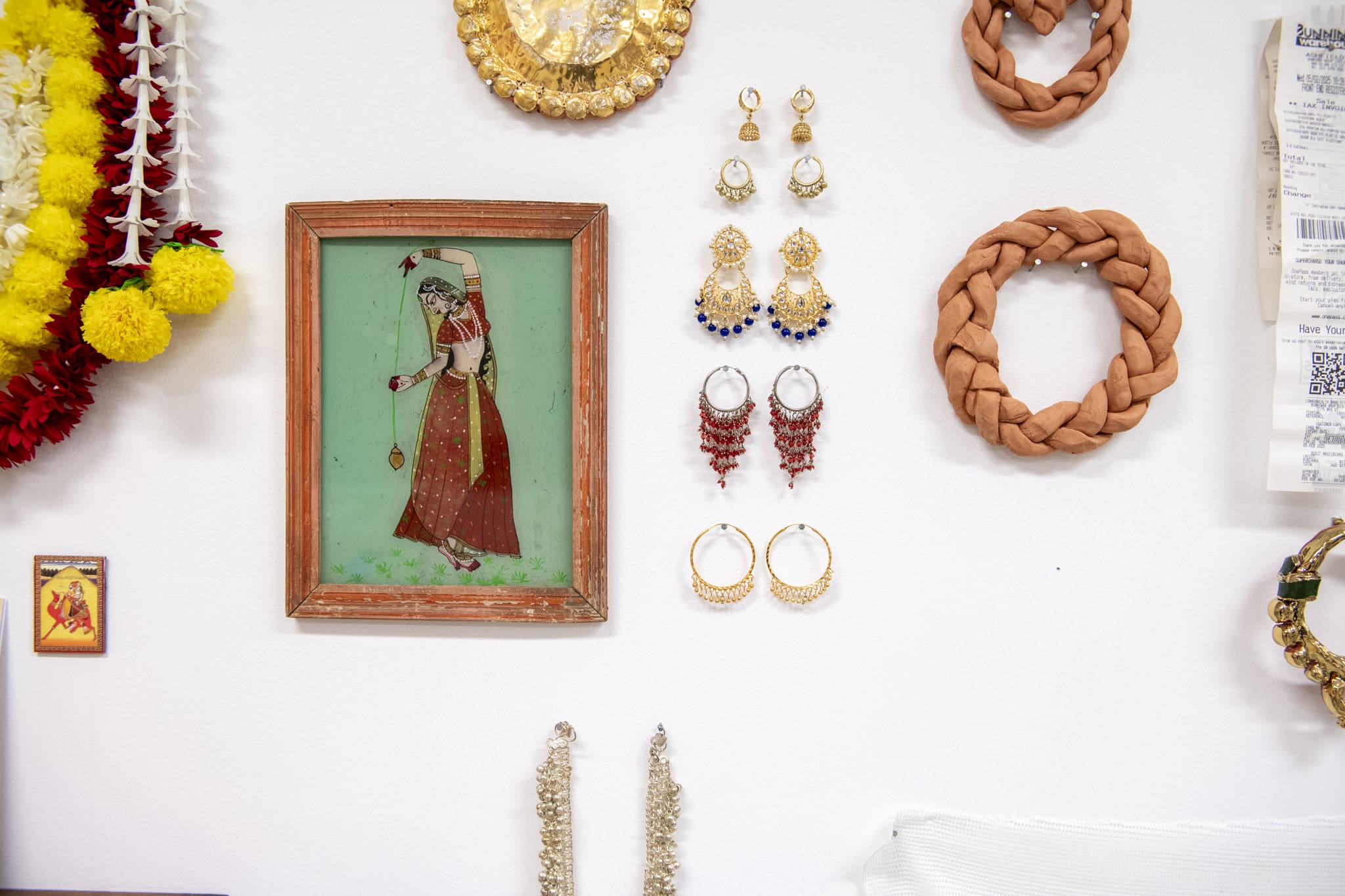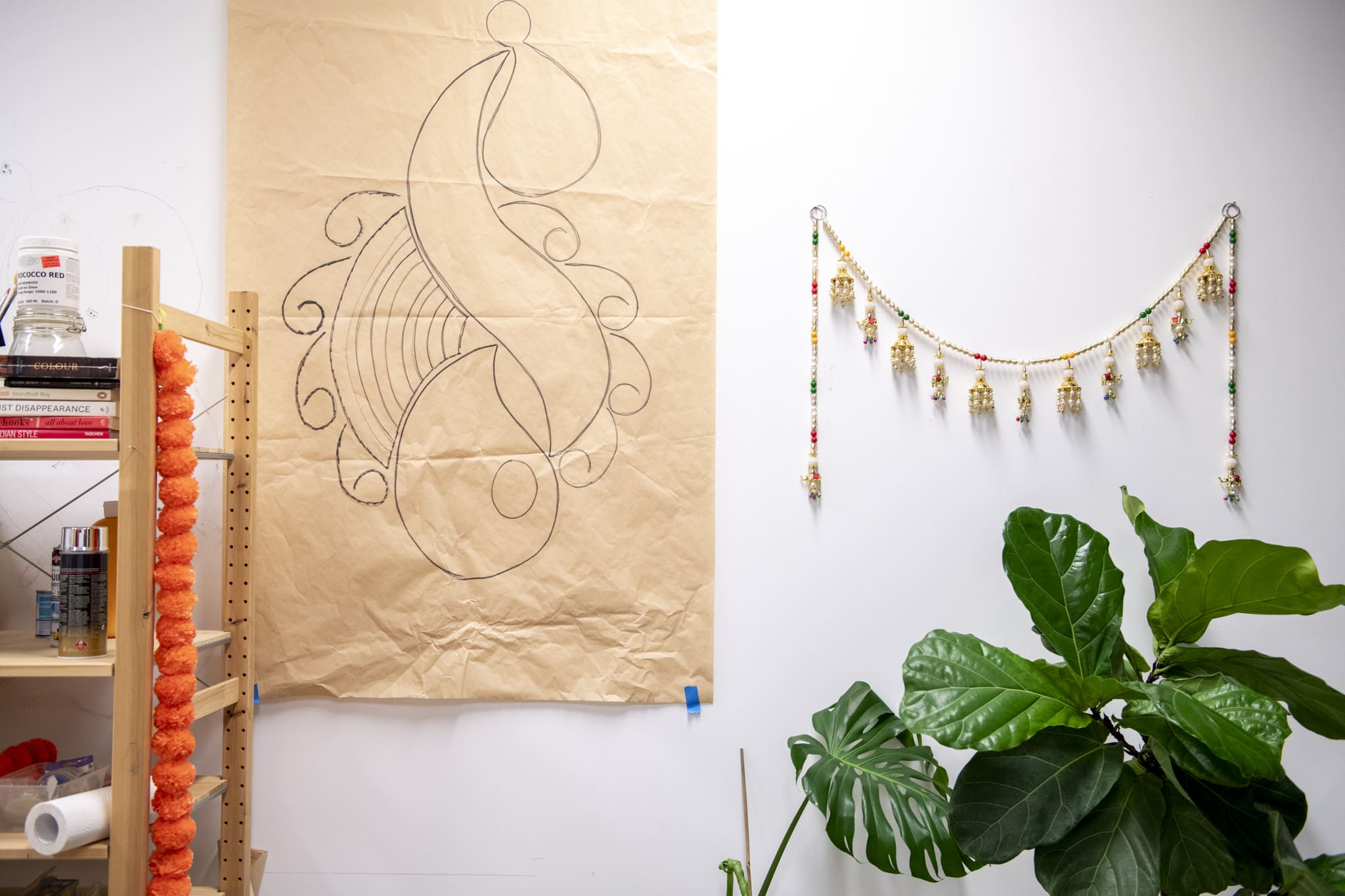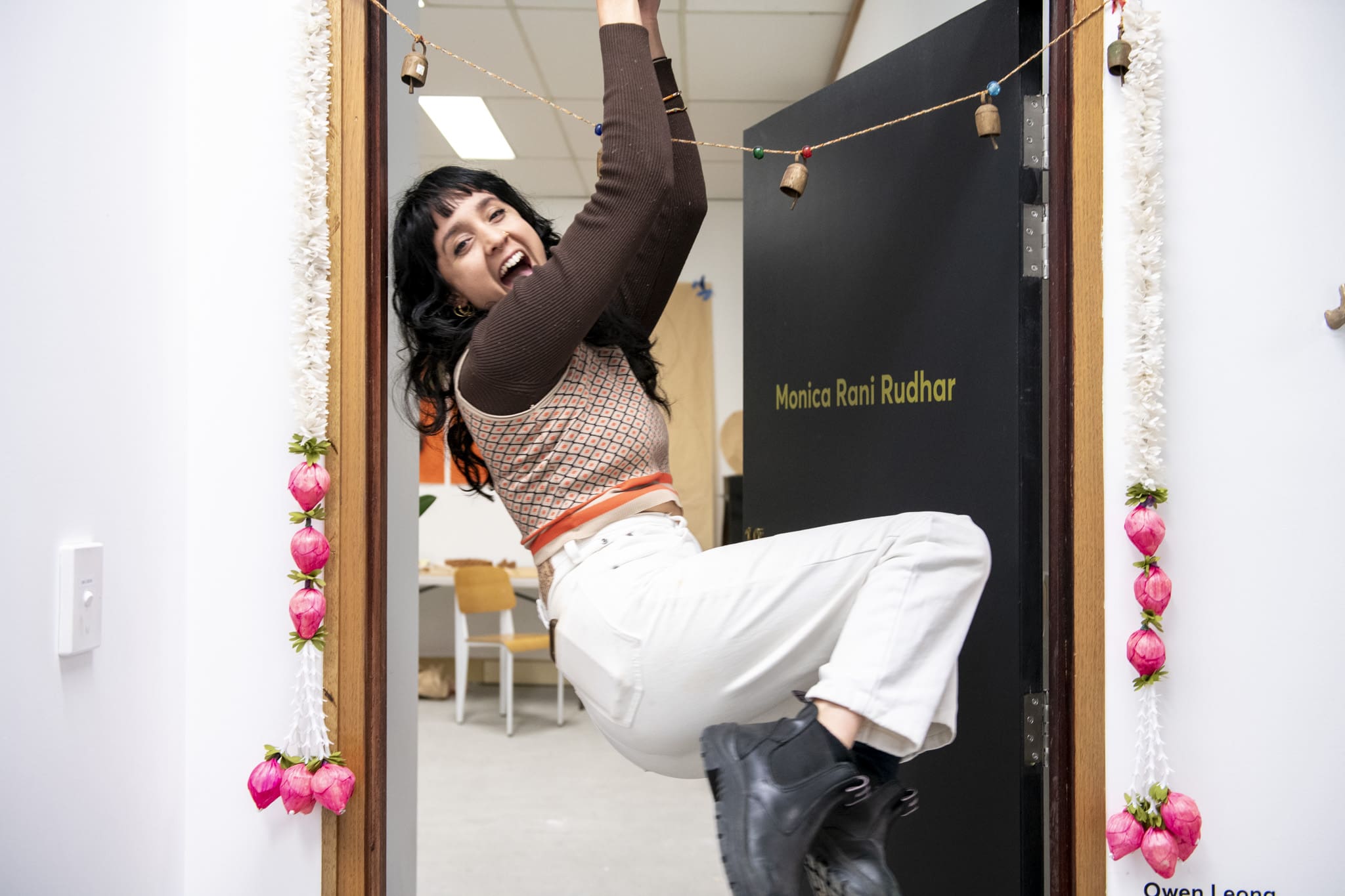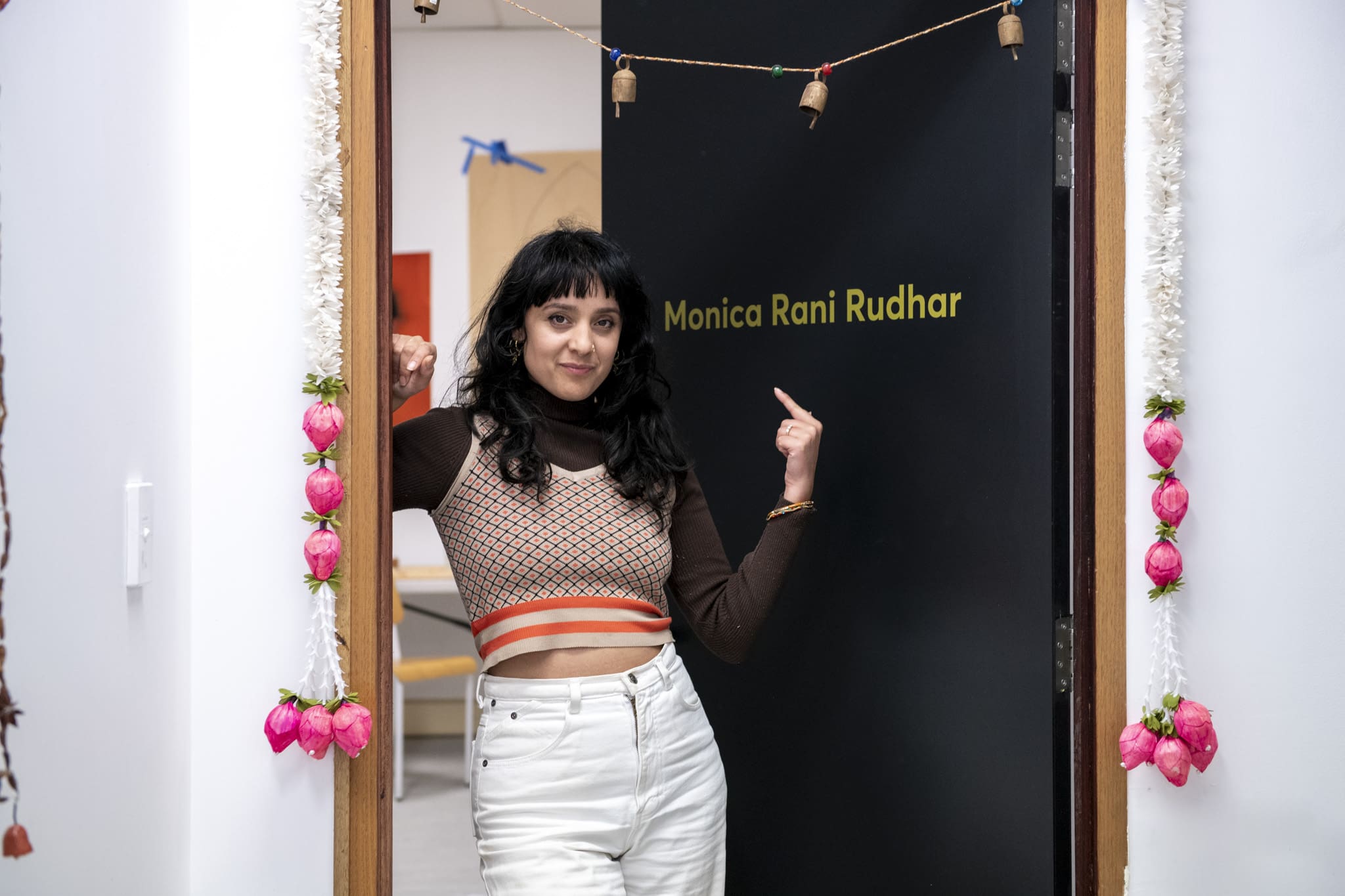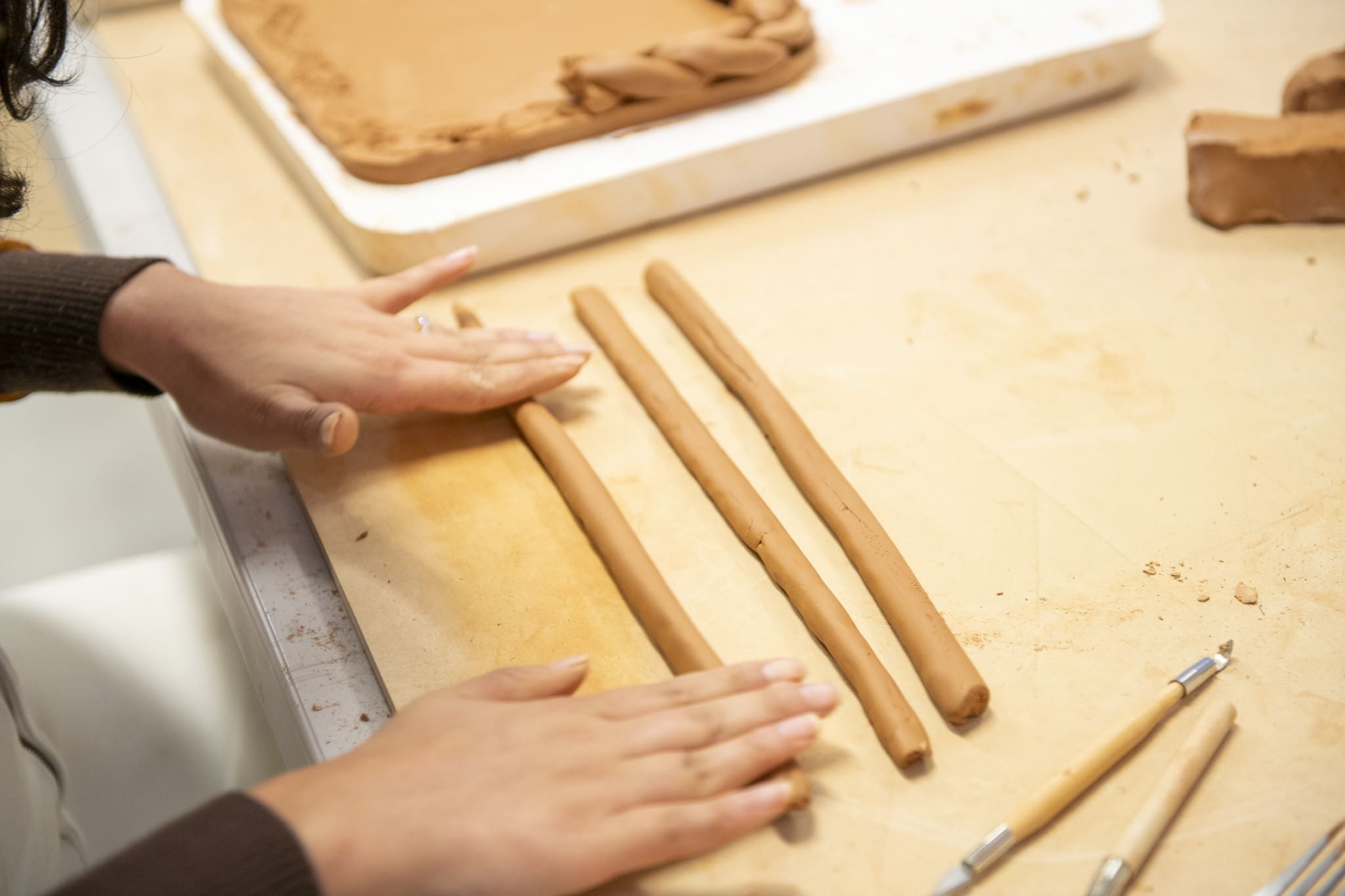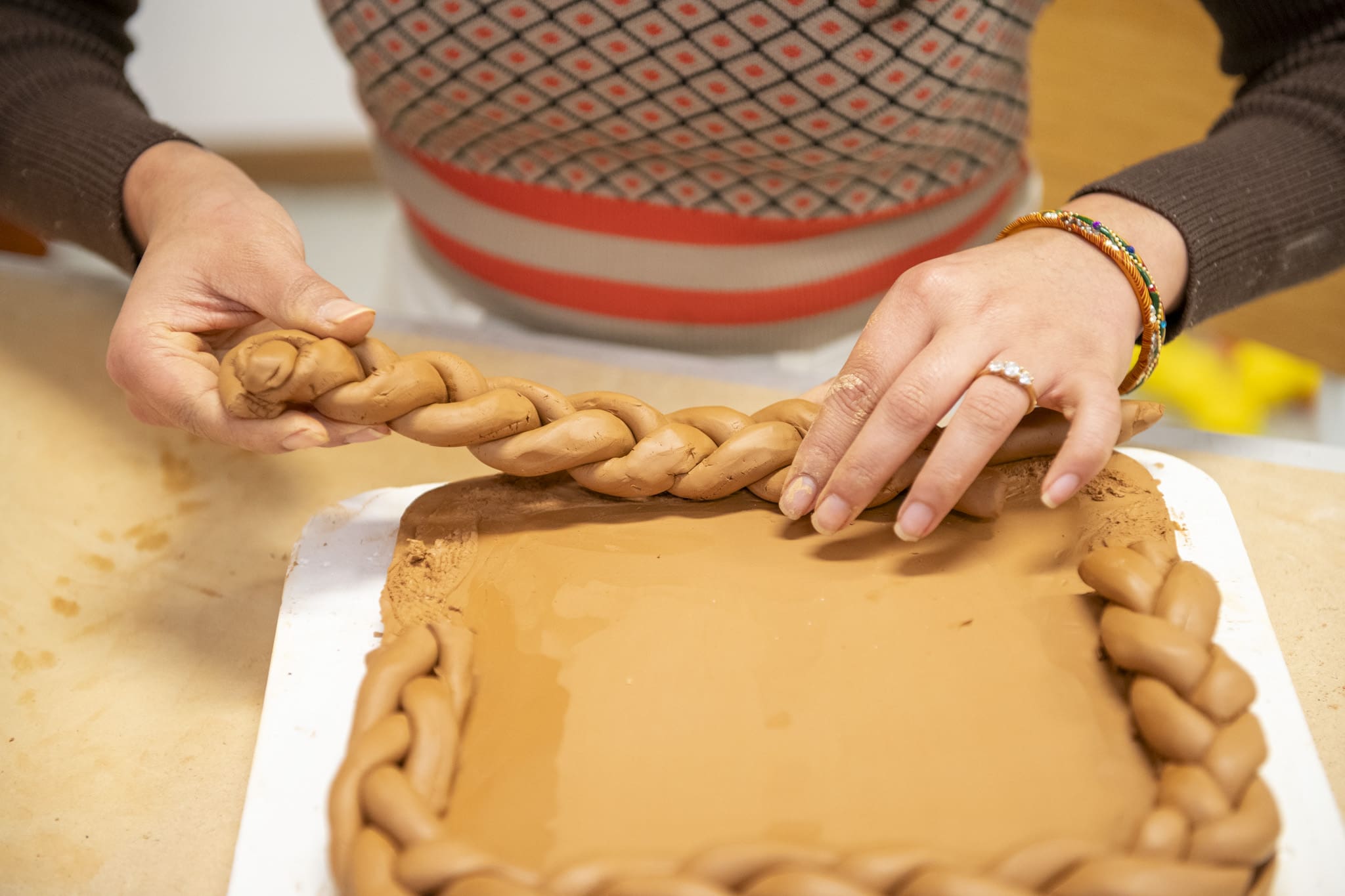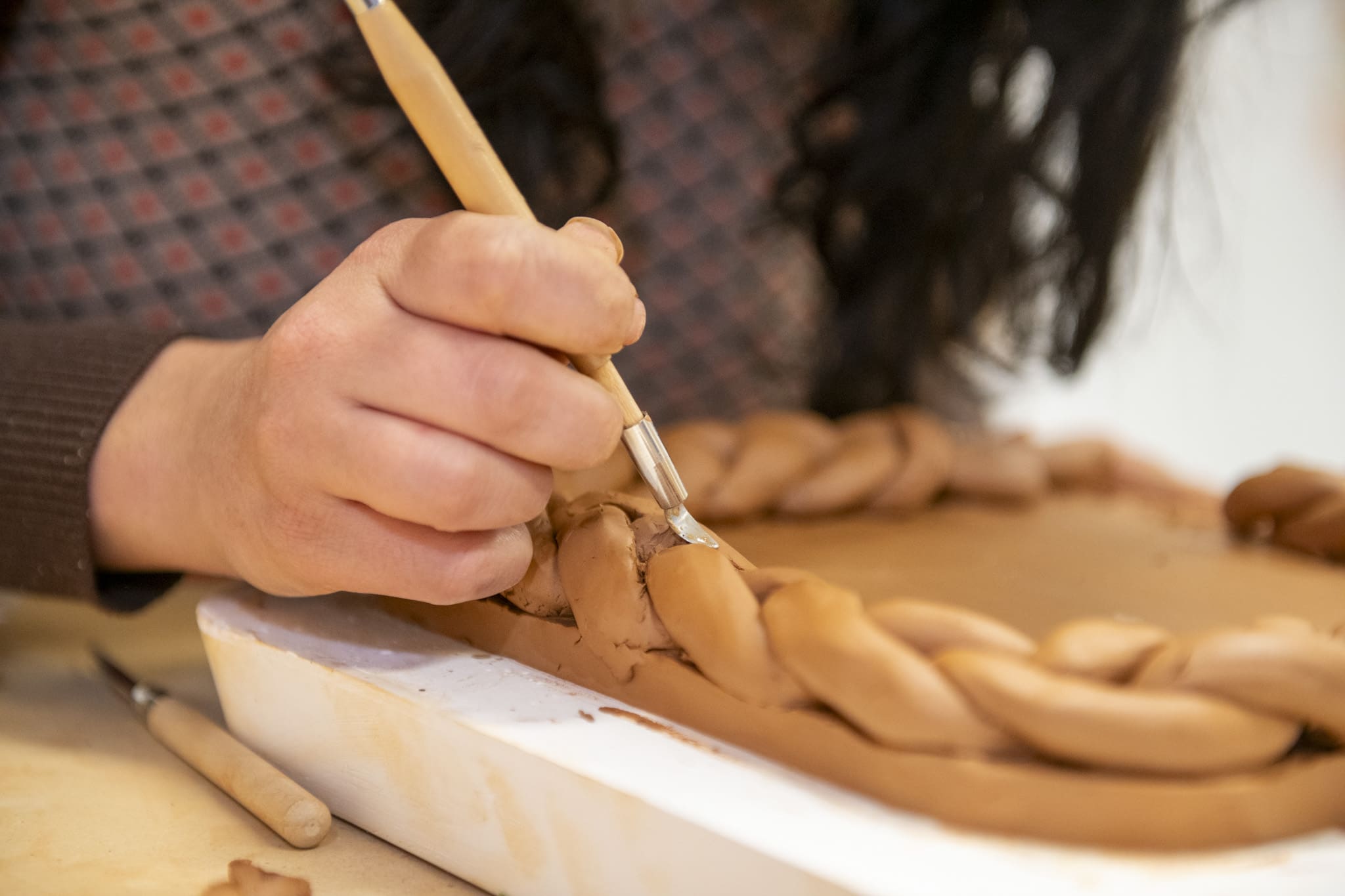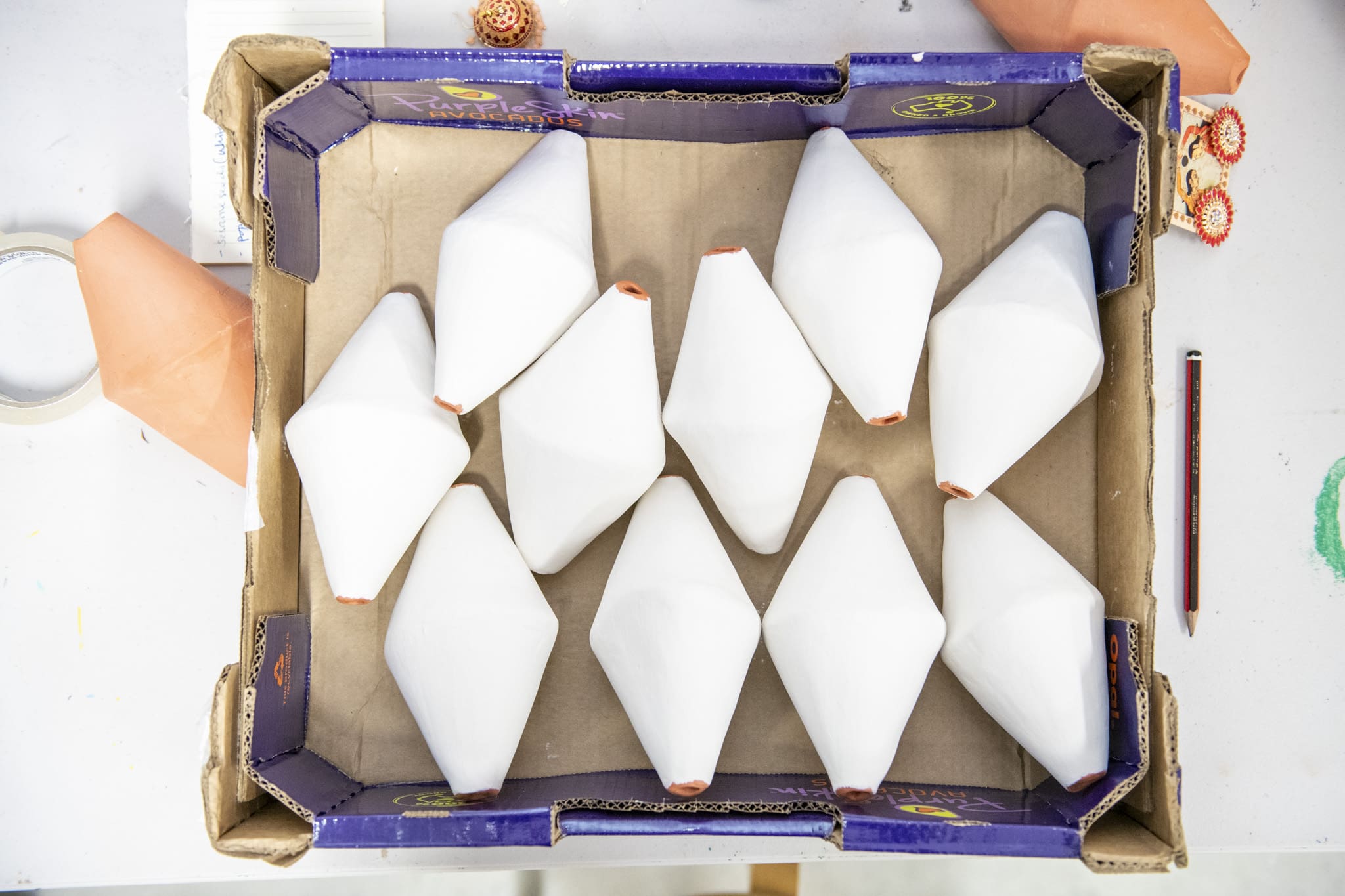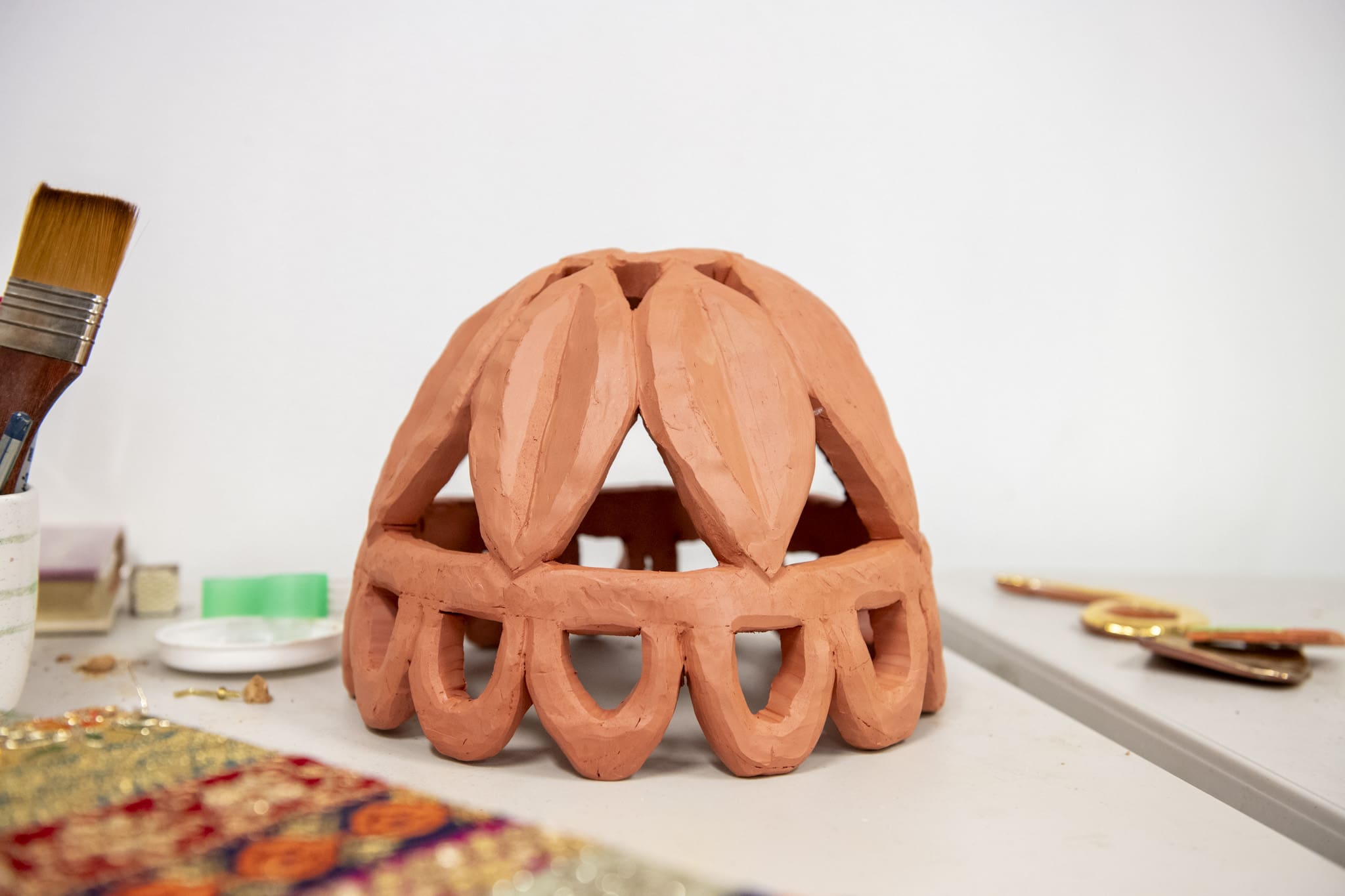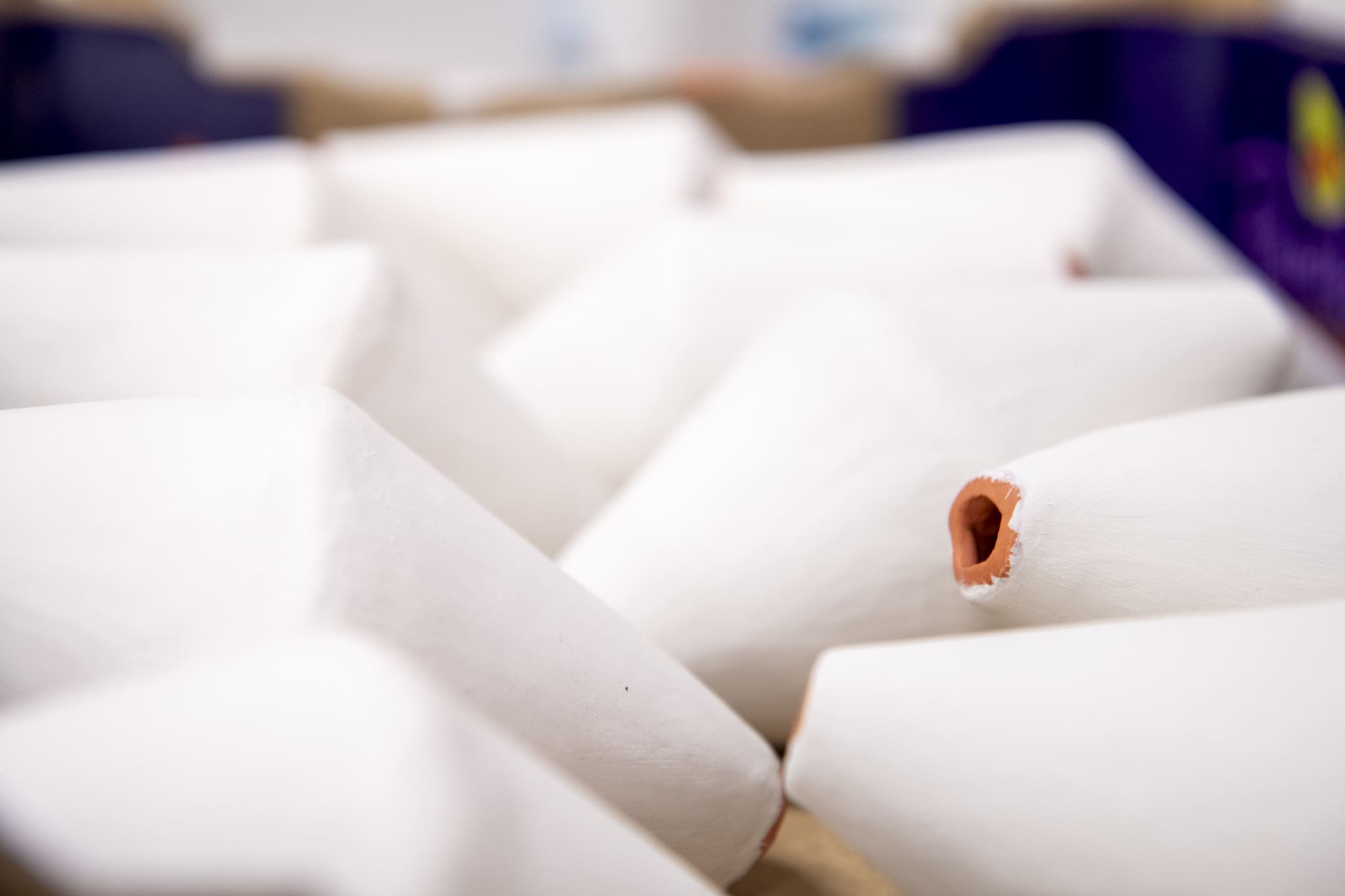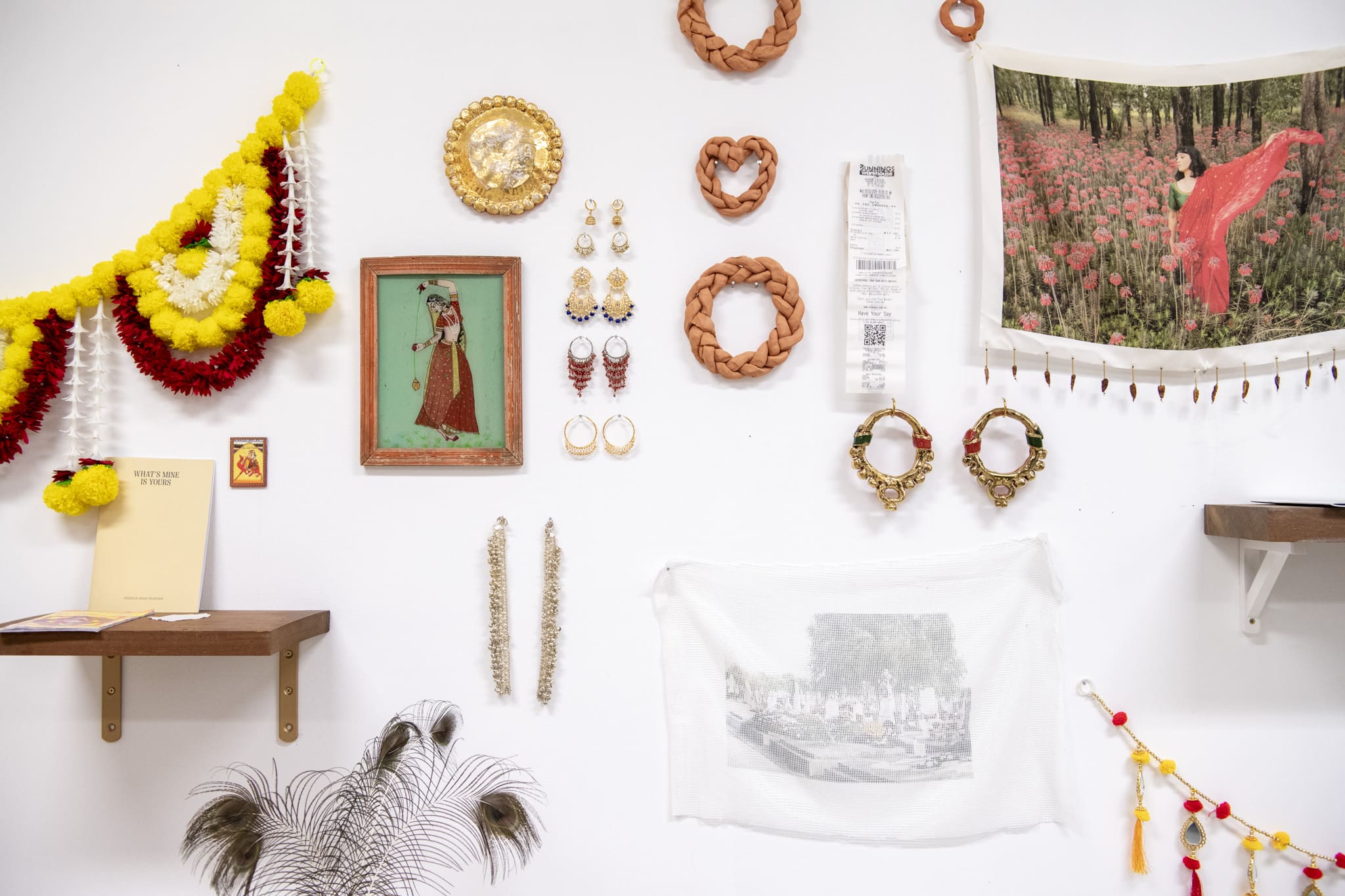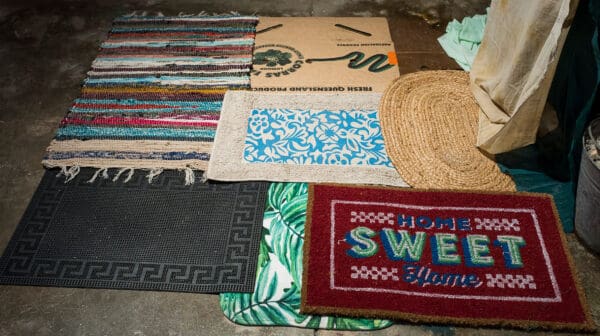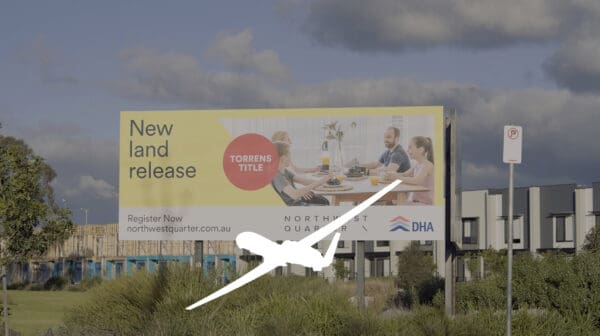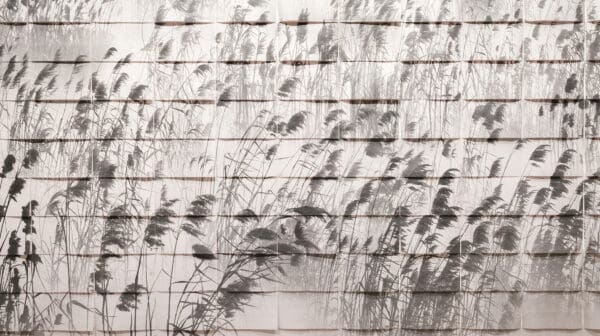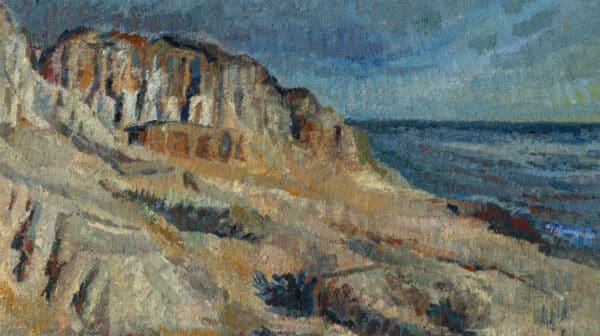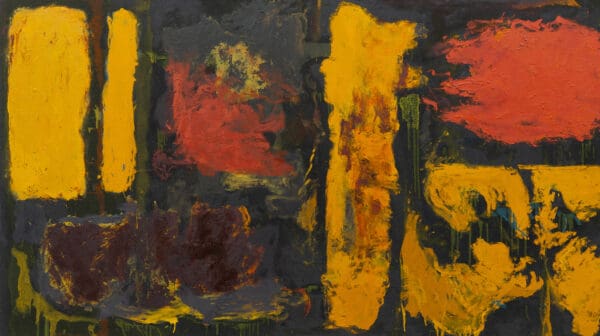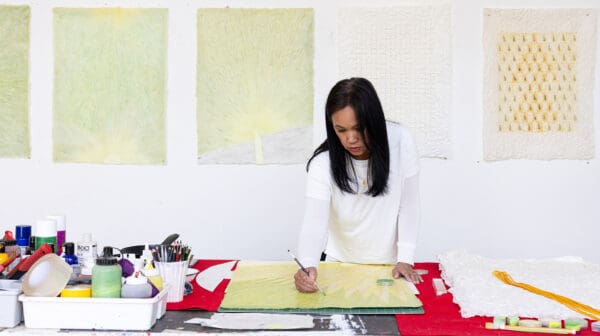Place
Monica Rani Rudhar: In my early studio days I really relied on Sydney artist-run initiatives like Our Neon Foe and Tiles Lewisham. I just loved being around people and found the community to be so generative. And now I’m here at Parramatta Artists Studios (PAS) in Granville.
It’s great being here with all these other artists and there’s so much professional development. The staff are so nurturing and really prioritise everyone’s singular needs. I’ve met industry professionals I wouldn’t have otherwise, there’s opportunities that have come directly through PAS, and I feel like I’ve grown so much being here.
I also have a space at home which is handy, especially because I work full-time, but PAS is so much bigger and it allows me to work in a way that maximises my productivity. I can work on multiple projects simultaneously because I’ve got the space. I can store things, dry things, glaze things, bring them here, test the install of them.
It feels like I can refine ideas here. At home, things are a bit rougher. I also work off a sketchbook, and take that with me everywhere I go. It anchors me wherever I’m working from.
Process
Monica Rani Rudhar: I’m lost without my sketchbook, but also without my diary. I just can’t use technology. I need to be able to sketch, write a to-do list, scrub it out. My sketchbook also includes a lot of meeting notes, notes from my parents, stickers—things that I’m really sentimentally connected to.
My current sketchbook is covered in sari material, which is funny, because I bought it in Brunswick Heads. Almost all the materials I use, I’ve sourced from Australia, but they’re obviously imported so it’s been a weird way to access my culture.
A lot of my work develops through conversations with my parents, over FaceTime, or while we’re eating. They’re my bridge to stories held by family abroad, especially as they act as translators between me and my non-English speaking family members.
But my material process almost always starts with a sketch, even of things that just pop into my head and aren’t fully fledged. They’ll just marinate there and I feel like they come to the surface when they’re ready. But from the first sketch, I’ll do a larger drawing to scale and then create pattern pieces that I can put up here in the studio. Then I’ll build, carve and fire.
I often work from actual jewellery pieces but I like experimenting with different materials. For my solo show at Martin Browne, I’m wanting to incorporate plaiting, which is why I’ve been playing with all these hair extensions. I just need something to be able to make a maquette. That’s what’s so great about clay. I can just whip something up and see how it looks, it doesn’t have to be refined. And I can smoosh it back or recycle it.
Playing in the studio has made me realise there’s other elements I want to introduce in my practice. I do work with ceramics, sculpture, photography and video but I’m wanting more sculptural elements, and so it’s been nice to play.
Projects
Monica Rani Rudhar: When we moved in here, PAS asked us what we wanted from this experience and where we wanted to be in the next couple of years. I’d said, oh it’d be really cool to make public art. It’s been a combination of hard work, luck and support from PAS, but I’m now working on a new suspension work for an exciting project in Parramatta, and another public artwork in Randwick as part of New Monumental, which has been curated by Vital Commons and commissioned by SCAPE, that will also feature works by Ramesh [Mario Nithiyendran] and Reko Rennie. I’m also working on a commission for the Maker Space in Blacktown, and in thinking about how I can expand my material language, I’m working on a series of soft sculptures for them.
For my upcoming exhibition, I’ve been looking at the different ways that I’ve been able to validate my culture—my sense of Indianness—and how important artificial jewellery has been in that process because I can’t speak the language, and I feel like that’s a big barrier. I’ve also been told by random people that I don’t look Indian enough because I’ve got my mum’s Romanian heritage as well.
There’s something about this feeling of imitation—I feel strangely linked to this jewellery that’s made to imitate something authentic, especially as I question my own ethnicity as a ‘half’ Indian—I’ve had to grapple with feeling like an imposter, as well as feeling like I don’t belong to either side. When I wear costume jewellery it feels like I’m home within myself somehow.
I’m focusing on scaling up some personal pieces I have, including earrings from my cousin’s wedding, and my Year Six school formal earrings that I wore with an Indian outfit and just remember standing out from everyone else.
I’m also tying in the plait and braid. When I was at school, my parents wouldn’t let me cut my hair. It was so long and so defining and I hated it and wanted to cut it so badly. Returning back to it, recognising it was actually something that tied me to my culture, even though I wanted to reject it then, feels special now.
So I’m excited to introduce these new themes and elements to my work. This show is about paying homage to those things that have given me a true sense of validation as a mixed race South Asian woman, while playing with materiality and authenticity.
Just Like The Real Thing
Monica Rani Rudhar
Martin Browne Contemporary
(Sydney/Gadigal Country NSW)
Until 19 July
This article was originally published in the July/August 2025 print edition of Art Guide Australia.


